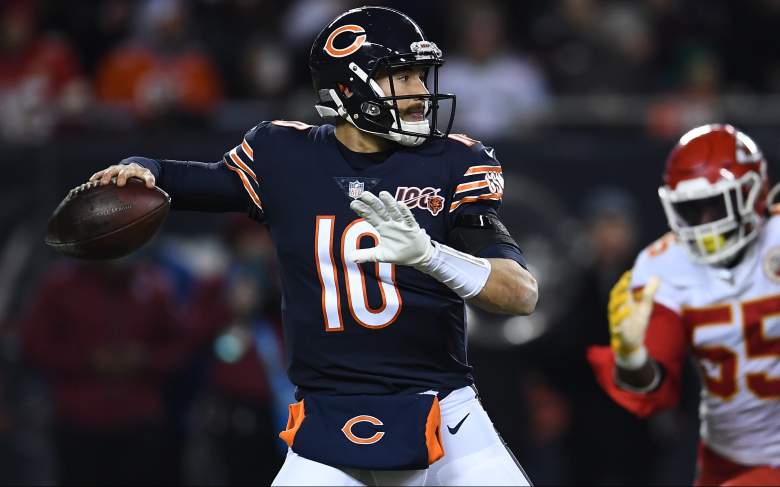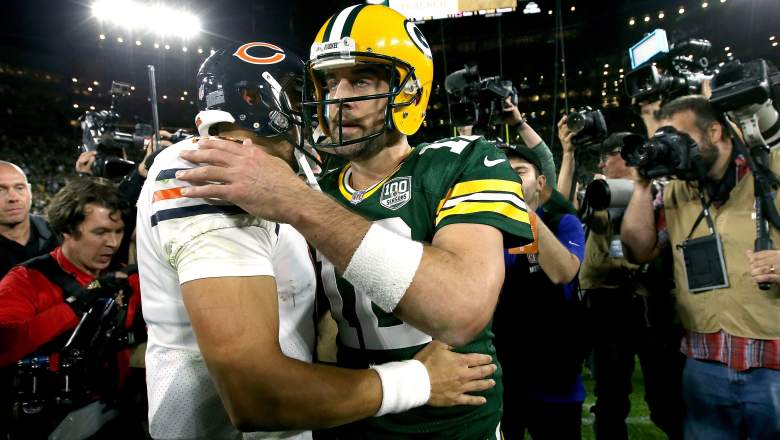
Getty Chicago Bears quarterback Mitchell Trubisky
Score one for those who don’t think Mitchell Trubisky is the guy for the Chicago Bears. One of the common lines of defense employed by the fourth-year quarterback’s supporters during his disappointing 2019 season was the sheer amount of drops his wide receivers had. The Bears had 25 passes dropped last year, which was third-worst in the league.
One Twitter user looked at how dropped passes hindered each NFL quarterback in 2019, figuring in Expected Points Added (EPA) lost from a drop, assuming the receiver would have otherwise caught the pass. Every QB who threw a minimum of 200 pass attempts was included, and when the Bears’ drops were figured in situationally, Trubisky wasn’t nearly as hurt by them as many thought, coming in 24th out of the 34 quarterbacks listed for the 2019 season.
Quarterbacks like Aaron Rodgers, Sam Darnold, Baker Mayfield and Jimmy Garoppolo were far more negatively affected by drops than Trubisky was. So what does it all mean?
Follow our Heavy on Bears Facebook page for all the latest breaking news, rumors and content!
What Does EPA Measure, Exactly?
According to Inside the Pylon, the Extended Points Added stat measures:
“The value of individual plays in terms of points. This is done by calculating the Expected Points (EP) of the down, distance, and field position situation at the start of a play and contrasting it with the situation at the end of the play. A three-yard gain on first-and-10 is pretty different than a three-yard gain on third-and-two, something not usually captured in conventional statistics. The Expected Points framework helps translate raw gains into value.”
Thus, all 25 of the Bears’ drops last year were figured in situationally, and it looks as though Trubisky wasn’t nearly as hindered by the team’s drops as most of the league’s quarterbacks were. Running back Tarik Cohen had nine of the team’s 25 drops — which accounts for 36 percent of the total amount. One reason Trubisky wasn’t as negatively affected by the drops is because many of his throws to Cohen were at or behind the line of scrimmage. When a third of your drops aren’t going to amount for more than a few yards, it’s likely not going to hurt you or your team too much.
Packers’ Aaron Rodgers Most Negatively Affected By Drops in NFC North

GettyGreen Bay Packers QB Aaron Rodgers and Bears QB Mitchell Trubisky were both hindered by dropped passes in 2019 — Rodgers far more than Trubisky. (Photo by Dylan Buell/Getty Images)
Kirk Cousins and Matthew Stafford were ranked 28th and 33rd respectively in terms of negative impact from dropped passes, so Aaron Rodgers, whose Packers dropped 17 balls last year, was hurt more by those drops than anyone else in the division. Rodgers was 12th on the list compared to Trubisky at 24, so it wasn’t close in terms of which QB was hurt more by his receiver’s drops.
This is not to say Trubisky or the Bears weren’t negatively affected by their 25 drops — it’s obvious they were. But perhaps Trubisky’s struggles were more about his overthrows, his inability to read defenses and his decision-making than they were about dropped passes.
READ NEXT: What WR Ted Ginn Jr.’s Contract Means for Other Chicago Bears’ Wideouts